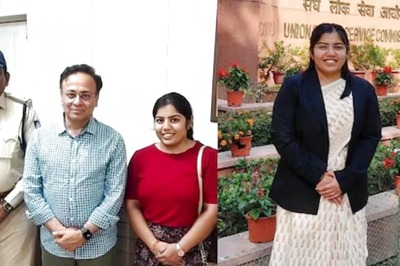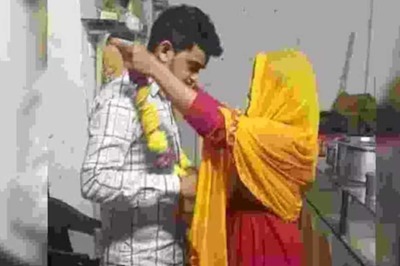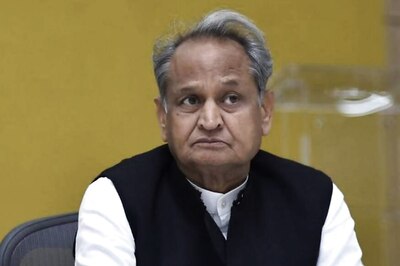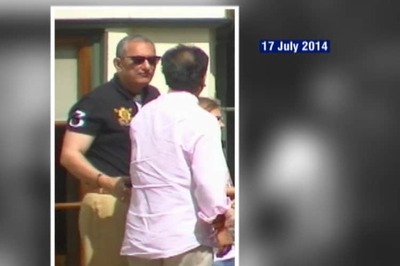
views
In a recent book titled ‘JP to BJP: Bihaar after Lalu and Nitish’ writer and journalist, Santosh Singh, traces the political history of Bihar – from its socialist roots to its recent saffronisation.
Singh introduces the book by saying, “The book takes up a whole range of questions, confusions and conundrums of the politics of Bihar from the 1930s onward—from Triveni Sangh to Ram Manohar Lohia’s brave fight against the Congress to the JP Movement’s onslaught against the autocratic rule of Indira Gandhi and the arrival of Lalu and Nitish on the national and Bihar’s political landscape.” However, that is not where the book ends. In a very interesting last chapter Singh discusses how the young politicians of Bihar are likely to shape the upcoming election in 2025.
He questions if Kanhaiya, who had not played an important role in 2020 Assembly polls, will be pivotal in 2025? The author writes,
“He(Kanhaiya)says, his playing a political role in Bihar in 2025 would depend on a lot of factors. He has been upset with the cash-based economy. Doing away with the public distribution system has been hurting everyone. He asks if people can eat money if market forces are not able to supply grains. Kanhaiya holds that a tea-seller becoming prime minister is great news for democracy but the question is, whether he is catering to the class he came from.
…We ask him, can he(Kanhaiya) be a player in 2025? He parries the question. Kanhaiya’s opponents are dismissive of him but Kanhaiya is not. He says Tejashwi enjoys a good support-base. RJD, however, does not want to give credit to Kanhaiya for taking up the CAA and NRC issues more forcefully than any Opposition.
Tejashwi’s political advisor Sanjay Yadav says: ‘It was Tejashwi who had first talked about it. It is an organic crowd. Any other good speaker could have got as much crowd.’ (6) LJP president Chirag Paswan is outright dismissive of Kanhaiya. ‘He does not exist for me. I do not like to talk about the tukde tukde (divisive) gang.’
The Congress is ambivalent about Kanhaiya Kumar. This is where Kanhaiya has his window opening. Senior Congress leader Shakil Ahmed Khan says: ‘I have been part of all his meetings. My party has surely backed him.’ (8) But another Bihar Congress leader asks if Kanhaiya is bringing Muslim plus votes. Kanhaiya definitely has made the Congress think and discuss him in leisure and in detail.”
The author traces the roots of Kanhaiya’s politics in the book and finds several influences — from the politically charged discussions in Bihar to his choice of literature and his experience as a theatre performer. The book quotes Kanhaiya saying:
‘Bihar is a very politically aware place. There is discussion of national issues at tea shops, schools and to homes. I imbibed a lot of politics consciously and unconsciously. The second thing that shaped my political thought was literature. As I would complete my courses fast, I would take to reading books of Prem Chand. Ramdhari Singh Dinkar. Though Dinkar was from my neighbourhood village, I knew him through his works. I liked his Sanskriti Ke Char Adhyay besides Rashmirathi. Another important event that gave me stage confidence was my association with the Indian People’s Theatre Association (IPTA) from Class six onwards. I won prizes in several categories.’
However, stronger influences on him and his brand of socialist politics have been his family’s financial condition and his early induction in student politics. The author writes,
“Kanhaiya says, though his father had long been associated with CPI (ML) and had become a CPI member towards the last phase of his life, he cared very little for family norms. There had been life of want and penury. His eldest brother and sister had been sent to their bua (father’s sister) while Kanhaiya and his youngest brother stayed back with their parents.
Kanhaiya had taken to earning very early on, as he would earn `50 per day by administering polio drops right from Class seven on. His family did not have much agricultural land as most villagers had to give their land to the Barauni Refinery. His eldest brother and sister could study till Class 10. His mother is a matriculate and his father had not passed his Class 10 examinations.
Kanhaiya says, most young men of these villages with little earning would take up defence jobs, while economically well-off people would send their wards to study engineering or medicine. Kanhaiya would get first position in his class. He tells us the story of how, after getting first position in Class One, he was on his way home merrily. A village elder asked him how ‘unhattar (69)’ is written, he said, ‘59’ and got the subsequent numbers unyasi (79) and navasi (89) wrong too. The first boy of the village school had cut a sorry figure.
Kanhaiya was a weak child and was not much into sports because he had no say or stake in it. In villages, children who do not study are asked to work in the fields. Kanhaiya wanted to avoid such tasks and took to books thus. This not only saved him from rigors of physical work but also earned him respect from society. He calls himself a very lazy thing but adds: ‘Laziness is a costly thing which all cannot afford.’ Kanhaiya recalls how a flurry of private schools had started opening in the locality in the 1990s and he also studied two years in one such school.
After doing his Class 10, Kanhaiya told his father about his plans to study at Patna, as staying back in the village would have meant that he would be joining some college gang and later getting married. In 2002, he came to Patna and was formally associated with the All India Students Federation (AISF), students wing of the CPI. His politics became more organised. He would teach students to support himself. He would share an asbestos cover room with a student and had to pay `250 rent per month. In Patna, he realised the importance of English, as a class in English could get him `25 per hour while a class in Hindi would get only `15 per hour. Kanhaiya started reading grammar books written
by KP Thakur and later Wren and Martin. His brother Manikant had got a job as a guard in Assam and would send some money.
In later years, he brought Prince to Patna, where he studied till M Com and later also lived in Delhi. Kanhaiya says, living in the village could have made him a member of something like the boys in the Gangs of Wasseypur.
His research subject made him understand social fault lines at a time when being critical of government means being Left.”
The following excerpts have been published with permission from SAGE Select – Vitasta
Read all the Latest News, Breaking News and Coronavirus News here




















Comments
0 comment